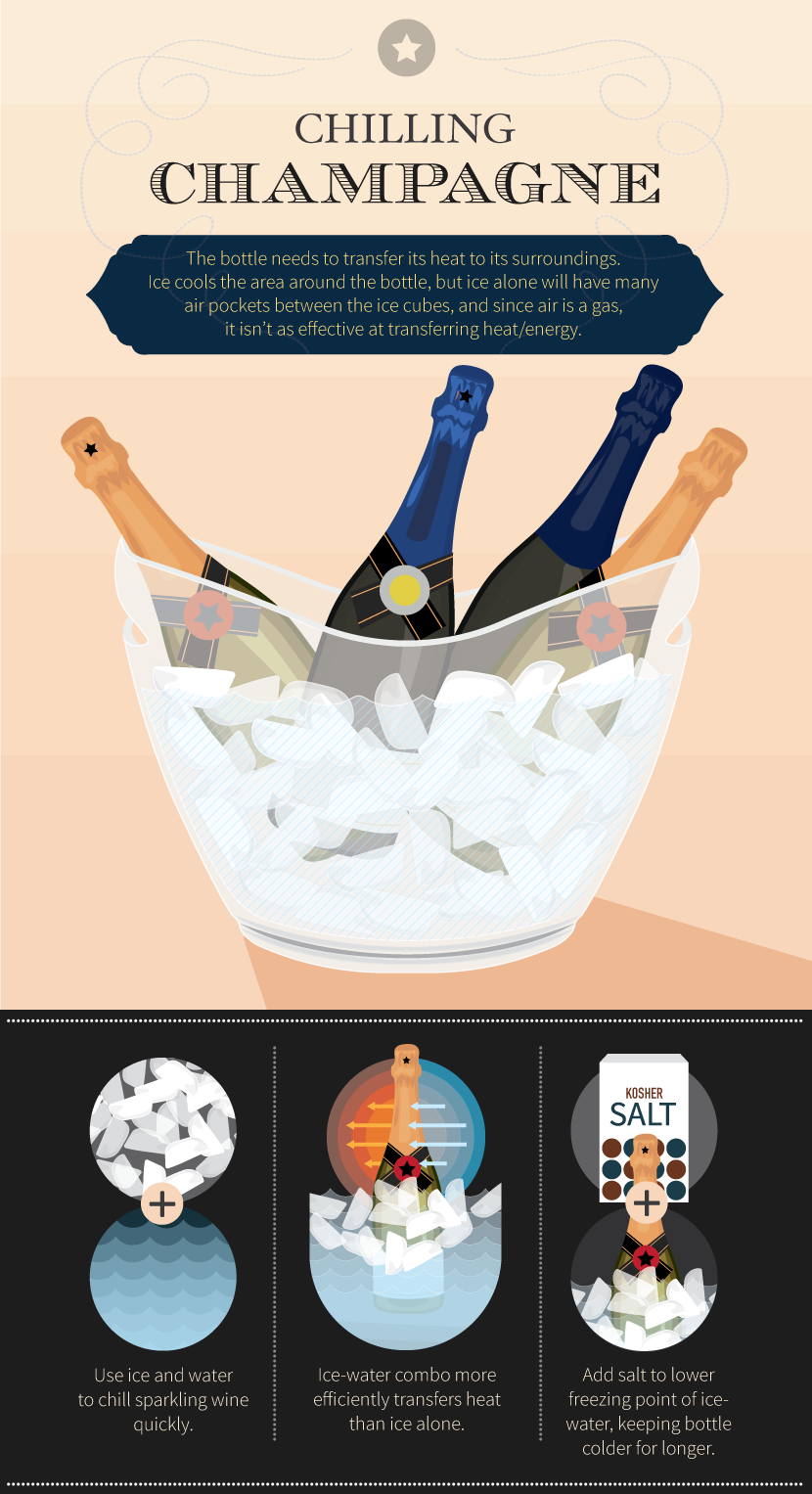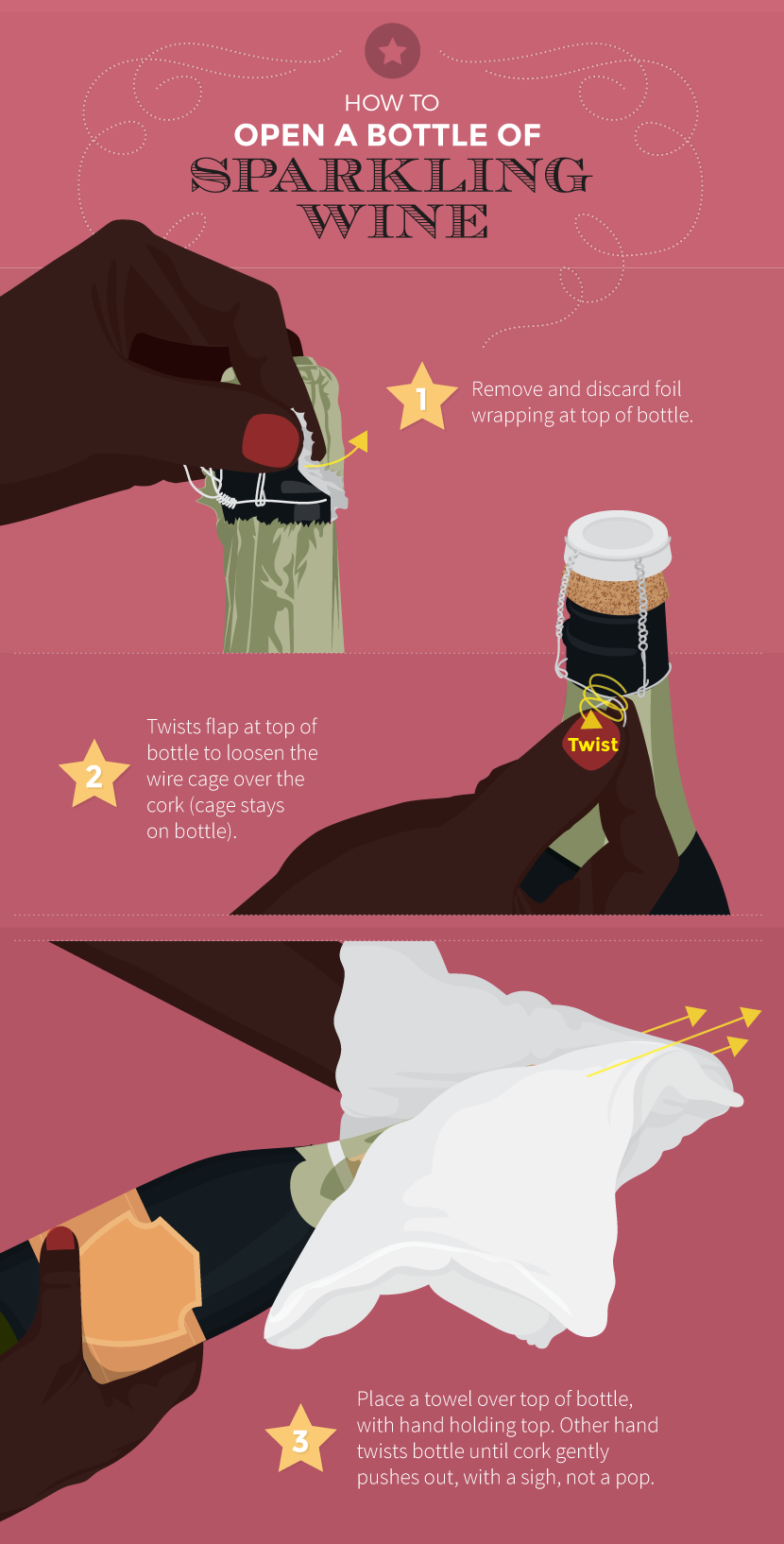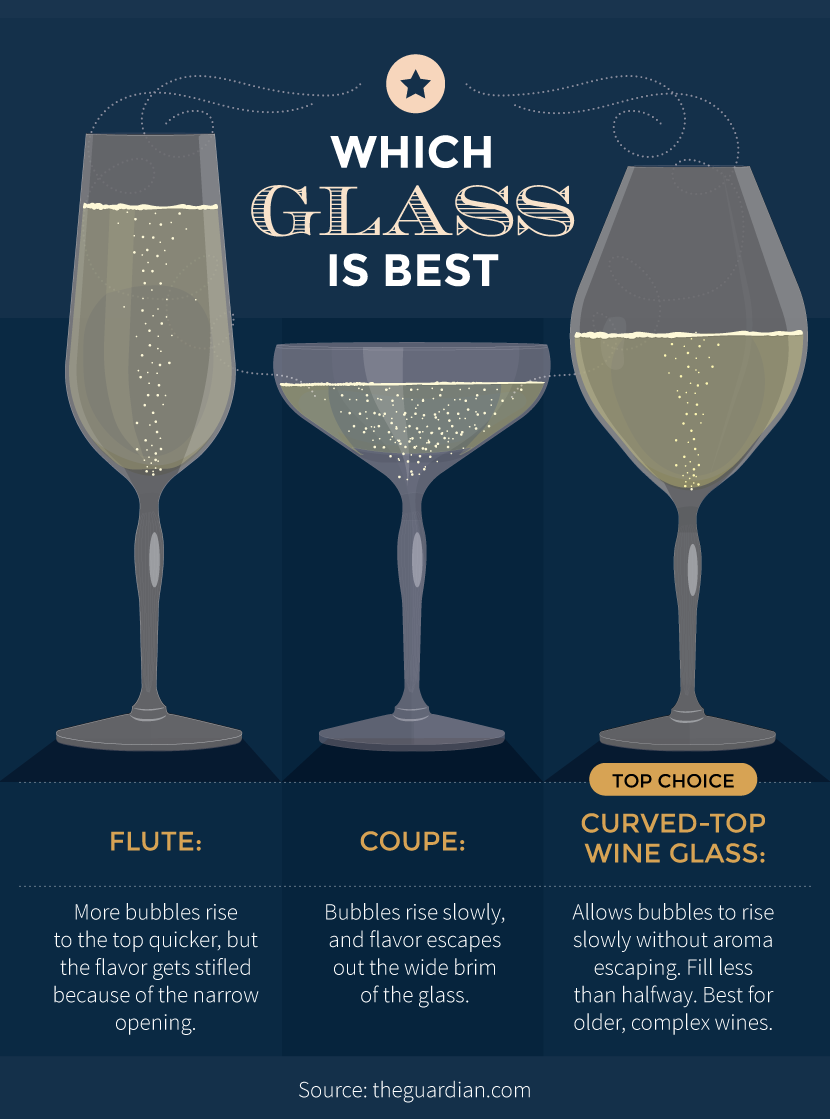It’s Not About The Pop!
If you’re reading this, the chances are good that you’re cheering for, and with, bubbles. Sparkling wine has arguably never been a more popular beverage choice, especially in the U.S. The Wine Institute reported that in 2015, Champagne and sparkling wine sales in the U.S. grew by two million cases, topping off at an incredible 21.7 million cases that year.
You might be a bit shocked to learn, however, that the iconic imagery of celebrating major life events with the loud pop of a Champagne cork flying across the room has got it all wrong, at least when it comes to the best way to enjoy your bubbly-drinking experience. And if you’re like most of us, the bottle of sparkling wine at the end of that cork is being served too warm, too. Yeah, we know, we’re party poopers, but we’re trying to help you out, here.
While a cork-turned-flying-projectile is admittedly kind of fun, there are better ways of ensuring that your celebrations include getting the best out of the bottles of bubbly on which you spent your hard-earned cash. Those start with knowing the best way for chilling your sparkling wine (hint: it involves salt), and the best way to open it once it’s cooled down (hint: it’s not supposed to be noisy).
Here’s a primer on chilling and opening your bubbles, with an overview of the science behind it, for those of you who are skeptics at heart, and in case you want to impress your friends with your wine knowledge.
Chilling it Out
Due to its carbonation, sparkling wine generally tastes best when it’s served colder than most other wine styles. Typically, this is in the 43–48 degrees F (6–7 degrees C) temperature range. A lower temperature also slows down the molecular activity in the bottle, making it safer to open; warmer carbonated liquid tends to foam up more – which can make a mess. So, in a way, chilling sparkling wine is actually the first step in properly opening it.
You can achieve this chill-down by putting your bubbles into the refrigerator, but that takes about three hours, and mostly kills the romance associated with whipping out a bottle of celebratory sparkling wine. The quickest way to get your sparkling wine to the right serving temperature – usually getting the trick done on a 750 ml bottle in 20 minutes or less – is by using an ice bucket, ice, water, and salt.
First, fill the ice bucket about halfway with ice and water. This is the most important step in chilling the wine, and the one that even some seasoned professionals sometimes miss. A mixture of ice and water will chill down your sparkling wine much more quickly than ice alone. For that, we can thank the laws of thermodynamics (you know, the stuff you slept through during science class in high school). For the wine to cool, it needs to transfer its heat to its surroundings; the colder the surroundings, the more quickly it can do this. Ice, of course, cools the area around the bottle, but ice alone will have many air pockets between the ice cubes, and air, being a gas, isn’t great at heat/energy transfer. Water, on the other hand, is a pretty good medium for transferring heat, and it will fill in the air pockets between the ice cubes, increasing the amount of cooling material in contact with the bottle, thereby getting the bottle of bubbles cooler, faster.
Adding a handful of salt to the ice/water mixture before gently putting the bottle into the ice bucket is also a good idea. Why? Because salt will lower the freezing temperature of the ice water in the bucket. When that happens, there’s more melting than freezing happening in the bucket, increasing the ice water’s ability to absorb energy from the wine bottle, and minimizing the cooling time required. See, you should have paid more attention in physics class!
Don’t “Pop” it Open
Now that you’ve given your sparkling wine a 15-or-so minute chill-out, it’s time to open it up. Notice we didn’t say “pop” it open. Flying corks can be dangerous, and should be avoided. Not only that, but a loud “pop!” indicates that you’re releasing a lot of the carbonation in the sparkling wine, and you actually paid extra for those bubbles – so we want to keep them inside the bottle as best we can. Also, forget using a corkscrew on sparkling wine, because that’s dangerous; this needs to be done by hand.
First, get a small towel and dry off your bottle after removing it from the ice bucket. Next, remove the foil around the top of the bottle, and grab the bottle with one hand. Using your other hand, grab the wire tab at the bottom of the “cage” that secures the cork, and untwist it by turning it counter-clockwise.
While doing this, keep a thumb from your other hand on the top of the cage, and be sure that you’re not pointing the bottle at anyone (including yourself) or anything expensive. The reason: you’re holding a potential missile. There are 5 to 6 atmospheres of pressure inside that corked bottle of bubbly, equating to about 70 and 90 pounds per square inch. That’s the reason that Champagne bottles are thicker than still-wine bottles: so that they don’t explode. The pressure is going to want to find the quickest release, which is the opening in the neck of the bottle.
Once the wire cage is loosened, put the small towel over the top of the bottle, hold it at about a 45° angle, and continue to hold the top with one hand. Start twisting the bottle – yes, the bottle – slowly with one hand, while applying pressure against the cork and cage with the hand that’s holding the towel-covered top of the bottle. The carbonation will be trying to pop that cork right out, but that’s not what we want. Continue applying slight “negative” pressure as you twist the bottle, until the cork loosens and you can release it slowly.
If done correctly, instead of a pop, you should hear a sigh…which, hopefully, is similar to the sound that you’ll be making after drinking and appreciating your properly chilled and properly opened bottle of bubbles!
Credited to http://www.partselect.com/blog/how-to-open-a-bottle-of-bubbly/



 0
0


